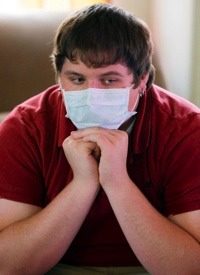
According to an expert on infectious diseases, the death rate from the H1N1 swine flu appears to be lower than forecasted. In fact, it looks to be in line with any moderate flu season, Reuters reported on September 16.
Harvard University’s Dr. Marc Lipsitch believes the H1N1 flu ranks at the lowest end of the rating scale for pandemic diseases. The U.S. government’s Pandemic Severity Index has five categories, with category one being the lowest severity and category five the highest.
Category one equates to a normal seasonal flu epidemic, which has a death rate below 0.1 percent. This means that 250,000 to 500,000 people around the globe die in a normal flu season. On the other end of the scale, category five pandemics have a death rate of two percent or higher. Like the 1918 flu outbreak, tens of millions of people around the world perish during a category five pandemic.
Lipsitch informed a gathering of flu experts sponsored by the U.S. Institute of Medicine that he pegs the H1N1 death rate at 0.007 percent to 0.045 percent: “Barring any changes in the virus, I think we can say we are in a category 1 pandemic. This has not become clear until fairly recently.”
The clarification came when Lipsitch correlated official reports of hospitalizations and confirmed deaths against global data on the number of people who had reported experiencing a flu-like illness. This new information about how many people died versus how many were infected puts the H1N1 pandemic into proper perspective as being like a normal flu season.
“The news is certainly better than it was in May and even better than it was at the beginning of August,” Lipsitch declared. “It’s mildest in kids. That’s one of the really good pieces of news in this pandemic.”
Initially, the death rate looked worse because those sick enough to be hospitalized were naturally the ones being tested for H1N1 flu. When the number who died is compared primarily to the number hospitalized, the death rate looks worse. But those who became infected and never needed that level of medical treatment aren’t included. Lipsitch’s figures make a more realistic comparison of those who died to those who became infected, whether or not they required hospitalization.
Does this mean that concern over the H1N1 flu is exaggerated? “Yes, there’s been hype, but I don’t think it’s been an outrageous amount of hype,” Lipsitch said. Panic is definitely not justified, but normal precautions like careful hand washing and avoiding unnecessary exposure certainly have their place.
Lipsitch noted an important difference between seasonal flu and the H1N1 swine flu: the elderly are hardest hit by seasonal flu while swine flu is targeting younger adults and children. The elderly, with their multiple health conditions, are more likely to die from seasonal flu. Children and younger adults, perhaps by virtue of their general health being better than seniors, are not succumbing to H1N1 flu at the same rate as the elderly fall to seasonal flu.
The picture is not as gloomy as it has been painted. This should be taken into account when considering whether or not to be immunized against the H1N1 swine flu.
Photo: AP Images



